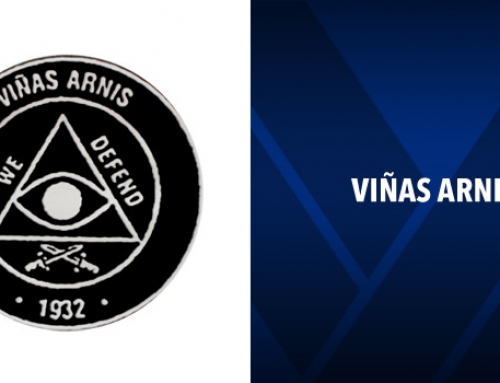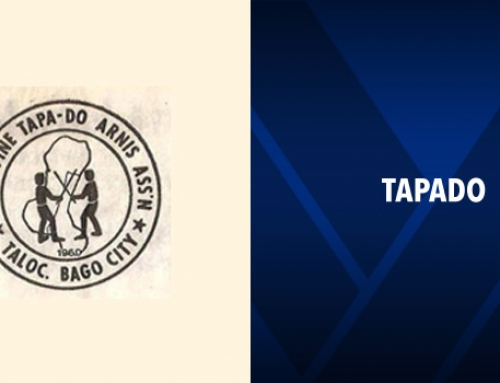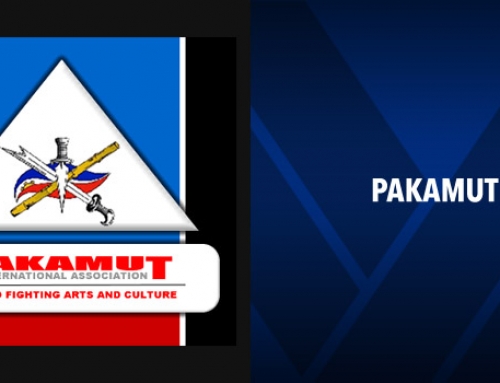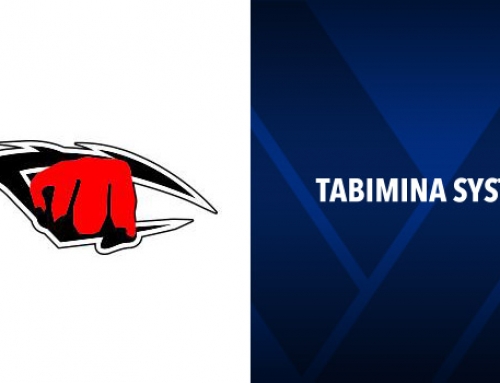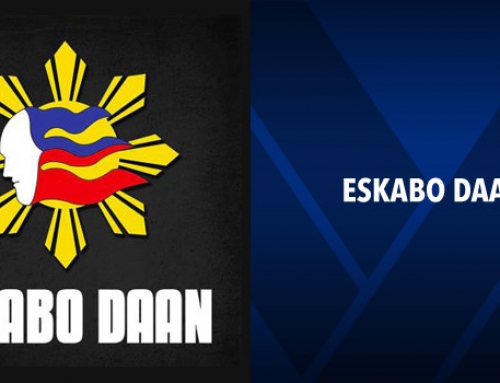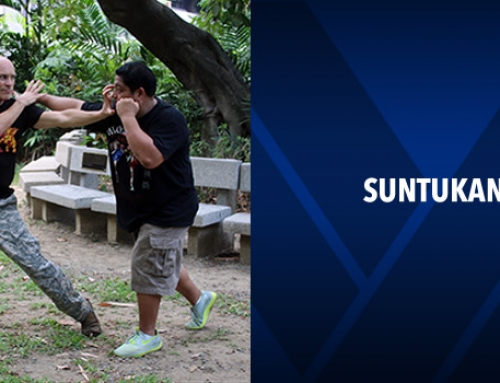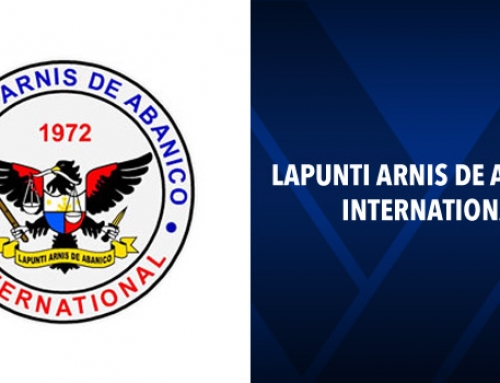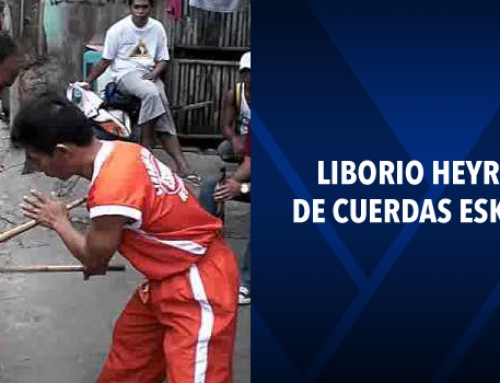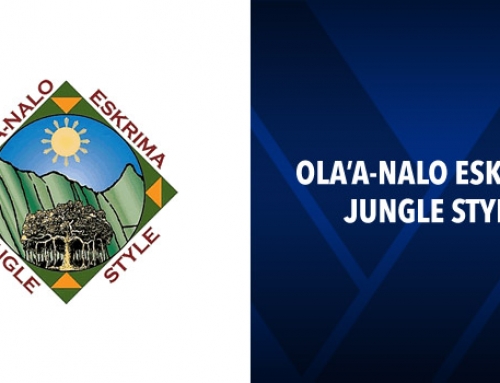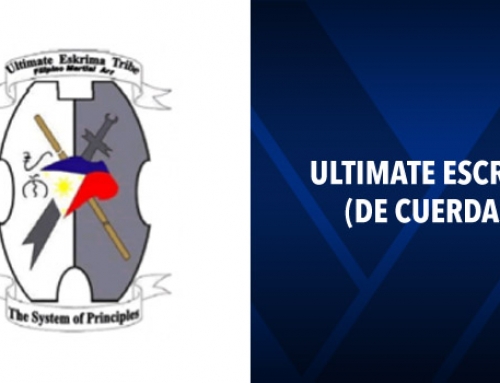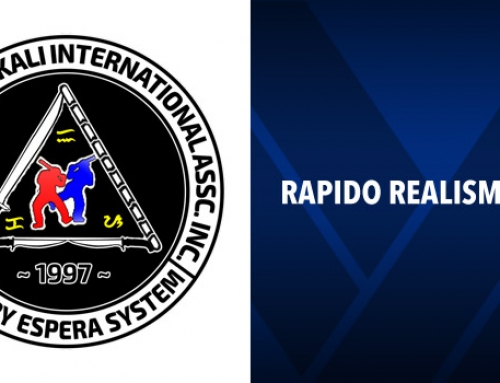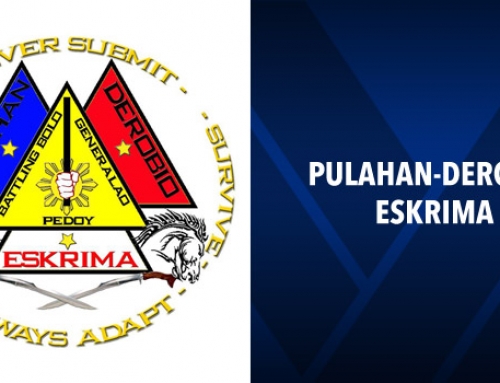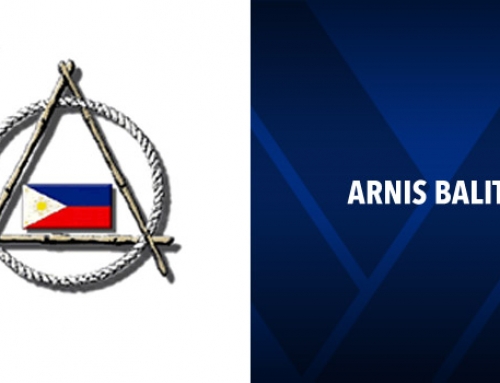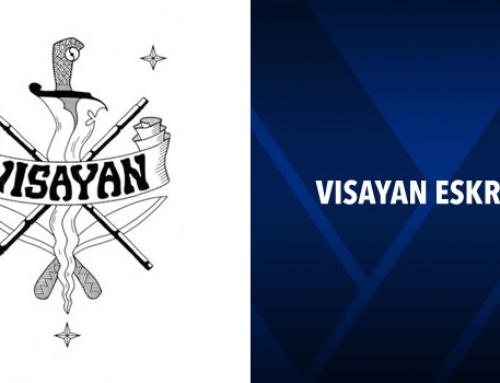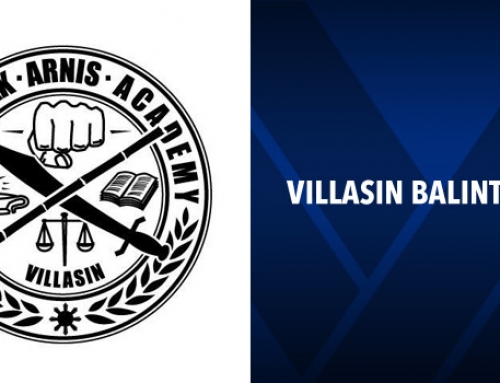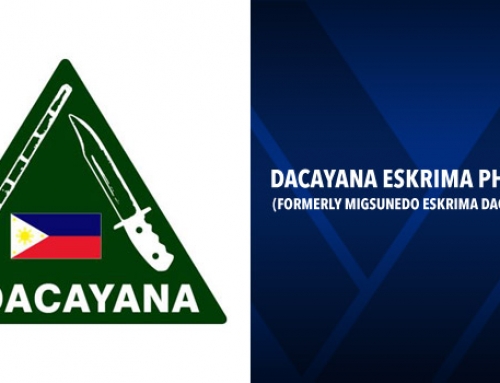Gat Puno Abundio “Garimot” Baet
Gat Puno (or Grandmaster) Abundio “Garimot” Baet (also known as Gat Puno Abon), was born and raised in Paete, Laguna Philippines, and he is the fourth son of Grandmaster Felipe “Garimot” Baet.
Gat Puno Abon teaches the family “Garimot” System, a complete martial art system that is strong in all combat ranges and is over 150 years old, and it is an art that has existed in the Baet family for over five generations.
Gat Puno Abon “Garimot” Baet began his training under his father’s instruction at the age of seven. He began training with Arnis de Mano starting with the footwork and the initial basic attacks known as the Abecedario.
Later, Grandmaster Felipe Baet went on to teach him Cinco Teros (5 ways of attack), Siete Colores (the 7 colors, a legendary seven angle Largo Mano system), and Doce Pares (the 12 Masters system, a 12 angle system originating in Laguna in the 1800’s), and the basic defense for each angle of attack for each.
His father also taught him the double stick, Sinawali, and basic knife fighting techniques including Balisong. His training then moved on to the application of Mano-mano (hand to hand) combat techniques, and the grappling system of the Filipino Aborigines that is called Harimaw Buno (Tiger Style Wrestling). Gat Puno Abon continued his training with his father, eventually mastering even the most advanced techniques and concepts of the system.
Eager to learn (or “absorb”) even more, Gat Puno Abon sought out other masters from Laguna, each a specialist in one of the following: Largo Mano, Sobrada Herada, Largo Mano & Herada Corto de Abaniko, Crossado Corto de Cinco, Sobrada de San Miguel, & Herada Corto de Payong.
He trained under each Master until reaching mastery. After a decade of intense training, Gat Puno Abon joined full contact, no padding, stick fighting competitions at Sixteen years of age. He lived up to the family tradition of victory by becoming a full contact, unpadded stick fighter and undefeated stylist of Arnis de Mano.
He competed in the Laguna provinces of Paete, Lumban, Magdalena, Siniloan, Majayjay, and Famy. He held his title as undefeated Stickfighter from 1978-1985 (at which time he started on his journey to move to the US).
He continued his training alone in the US, and then, with his father’s blessing, began teaching the “Garimot” system in the US, including Arnis and Buno.
In 1989 he founded the Laguna Arnis Federation, and Harimaw Buno Federation (Philippine Martial Arts, Garimot system, USA). Later he added the acronym P.A.E.T.E. (Paaralan ng Arnis – Estokada at Tradisyonal Eskrima)in honor of his hometown of Paete, Laguna in the Philippines.
He teaches self defense, stick fighting (laban baston), knife fighting (laban daga), empty hand combat (mano-mano), and buno (Filipino wrestling). His teaching of Arnis is based on the original Moro-moro stage play (the “Garimot” system includes all 30 sequences of the moro-moro).
The Moro- moro is where arnis, eskrima and estokada originated. Gat Puno Abon “Garimot” Baet is a fifth generation grandmaster. He is a supporter and promoter of the PAETE ARNIS FEDERATION and The CENTURION ORIGINAL (formerly Paete Arnis Club).
Gat Puno Abon has been featured in different publications including The Philippine American Journal, Inside Kung-Fu, and The Karate Voice.
He has given numerous seminars and demonstrations, including to civic & local organizations, law enforcement, and other martial arts groups locally and across the country.
Abon “Garimot” Baet is proud of the achievements that he has reached in Arnis, and as such he never forgets to acknowledge the other masters of Arnis de Mano that he was able to train under. They are as follows:
- Maestro Rufino “Pining” Absin (Paete, Laguna) – Largo Mano
- Maestro Tomas Baldemor (Paete, Laguna) – Sobrada Herada
- Maestro Clemente “Ente” Afunggol (Paete, Laguna) – Largo Mano de Abaniko
- Maestro “Indo” Afunggol (Paete, Laguna) – Herada Corto de Abaniko
- Maestro Jose “Peping”Dimasaka (Paete, Laguna) – Largo Mano
- Maestro Victor Afu David (Paete, Laguna) – Crossado Corto de Cinco
- Maestro Alejandro “Andoy” Cacaos (Lumban, Laguna) – Sobrada de San Miguel
- Maestro Juan “John” Ladiana (Lumban, Laguna) – Sobrada de San Miguel
- Maestro Totoy Acuno (San Antonio, Kalayaan, Laguna) – Herada Corto de Payong
- Maestra Myrna “Mana” Cadang (Paete, Laguna)
The experience of training with all of these well-respected Masters, including his own father Grandmaster Felipe “Garimot” Baet, in combination with the numerous experiences including victorious combat in full contact, unpadded stick fighting competitions, has formed today’s Gat Puno Abon “Garimot” Baet.
The System
 Arnis De Mano. Arnis de Mano is a vigorous sport which requires and develops stamina, quick reactions, speed, accuracy, and excellent coordination. Arnis de Mano serves as an umbrella title for the seven major combative arts of the Philippines:
Arnis De Mano. Arnis de Mano is a vigorous sport which requires and develops stamina, quick reactions, speed, accuracy, and excellent coordination. Arnis de Mano serves as an umbrella title for the seven major combative arts of the Philippines:
- Laban Baston (Stick Fighting) – (single and double stick)
- Laban Tabak (Sword Fighting) [including espada y daga]
- Laban Daga (Knife Fighting) (including Balisong Manipulation Theory)
- Laban Kamay (Hand to Hand Fighting) (Mano-mano)
- Laban Sipa (Foot Fighting) (Sikaran)
- Laban Buno (Grappling Arts) (ground fighting)
- Garimot Hilot (Healing Arts) (accupressure massage)
Arnis is very much a mental game as well as physical. The cerebral aspects of the sport are highlighted as one attempts to quickly analyze the adversary’s style while devising a means by which to counter it.
In addition to analytical thinking, Arnis requires decisive thinking and the courage to assume the offensive when the opportunity presents itself. Good sportsmanship is an integral part of the Arnis tradition.
Arnis was for many years considered a sport for gentlemen only and participants were expected to conduct themselves accordingly.
Much of this “flavor” still exists today. Arnis de mano has been proven in combat throughout the many wars in Philippine history and is held in high regard by law enforcement officers around the world.
The serious student will find the knowledge and skill gained through consistent and dedicated practice an invaluable addition to an existing martial arts repertoire.
 Buno Introduction
Buno Introduction
Buno is a Tagalog word meaning wrestling it is an empty hand fighting system developed by the indigenous people of the Philippines Islands.
There are literally hundreds of styles of Buno practiced throughout the Philippines.However, the Harimaw Buno formerly Harimaw Lumad (King Tiger Wrestling) style was particular to the Mangyans, of Mindoro, Island and Aetas Tribes in Infanta, Quezon in Luzon Philippines.
Harimaw Buno was the Preferred name by Gat Puno Abon “Garimot” Baet the founder and Grandmaster of the Harimaw Buno Federation.
Buno History
Grandmaster Falipe “Garimot” Baet is the person responsible for bringing Harimaw Buno to the Laguna provinces. He studied Buno under his father’s tutelage at the age of eight and continued his training in Calapan, Mindoro under two Mangyan Buno masters from 1946 through 1950.
The two masters were members of the Hanuno Mangyan tribe. Their style of Buno was regarded as a jewel of their culture and as such, was forbidden to outsiders.
However, Grandmaster Jose “Uti” Baet would pave the way for his generations to come five years prior. Grandmaster Jose “Uti” Baet, father of Felipe, defeated the top two practitioners of Buno, brothers Guimo and Tino Lait, during the Harimaw Buno Competition in Umiray Infanta, Quezon before the Japanese occupation of the Philippines in 1940.
The superiority of his skill was such that the two brothers were defeated without injury. In their lifetime, it would prove to be their only defeat in over 20 years of active competition. Out of respect, the two brothers agreed to train his son Felipe, in secret if necessary.
At the age of 16, Felipe was directed by his father to seek out the two Mangyan brothers. The trip to Calapan, Mindoro would be a long one so Felipe gained the company of his best friend, Ruben “Ginto” Madrinan in his search for the Hanuno Mangyan tribe.
His initial encounter with the Hanuno tribe proved to be less than encouraging. His request to study with them was rejected by the “Apo” (head tribesman) because he was an outsider.
Fortunately, the lait brothers would come to know of his presence in the village and the identity of his father. Surreptitiously, they arranged for him to stay in the next village and train him as one of their own.
Felipe underwent intense training with the two brothers for four years. He worked as a spear-fisherman at night and practiced Lumad (the Hanuno word for Buno) during the day in the hidden valley of the Mindoro Islands.
Buno, as a matter of course, is an empty hand practice. Although the knife, spear and bow and arrow play significant roles in hunting, the only true weapon of the Buno practitioner is the lubid.
The lubid is a course twisted length of rope approximately four feet long, worn around the waist. Prior to his trip to Mindoro, Felipe was educated in the use of this unique weapon by his father.
The training focused on disarming, subduing, and controlling humans. His time in Mindoro focused on the hunting of animals. An animal was often brought down, restrained and kept barely alive using the lubid. Hunting forays often meant several days walk into the forests.
From a practical point of view, carrying a live animal back to the village was easier than carrying a dead one and the freshness of the meat was preserved. Training primarily involved tying different kinds of knots, quickly and under duress.
With his training complete, Felipe became an undefeated Buno stylist in Calapan, Mindoro. His prowess as a master stick fighter was also established as he went undefeated in stick fighting competitions in the area.
In 1950, he left Mindoro to return to his hometown in Paete, Laguna. This was, however, after overcoming a very strange occurrence during his stay with the Hanuno Tribe.
During his second year of training, it happened that a tribe woman became enamored of Felipe. In order to assure his presence, she cast a spell to prevent him from ever leaving. as time passed, Felipe confided in his friend Ruben Ginto that his eyes seemed to perceive an impenetrable barrier surrounding the area perimeter.
Although aware of the magic at work, he could do nothing to counter it. When the time came to leave, he would require his friend’s assistance to dominate the mental apparitions. Ruben would eventually lead Felipe away with a blindfold securely fastened over his eyes under the cover of the night.
Upon his return to Paete, he encountered many challengers eager to see just how good the son of Grandmaster Uti Baet had become. He easily defended all opponents. In a short time, he became the local champion of track and field events, Bunong Braso (arm wrestling) and Pintal Braso (finger wrestling).
He would later join the Paete Arnis Club, a group of veteran stick fighters, and organize Arnis De Mano tournaments at every town fiesta. He remained an active stick fighter, maintaining an undefeated status in Laguna, Batanggas, Cavite, Rizal, Quezon, Bataan, and Mindoro. He was known throughout the provinces as “Hari ng Pitong Kabundukan” (King of the Seven Mountains).
In 1972, he began to instruct the Baranggay Police (village police) in stick fighting and Harimaw Buno techniques. He would later incorporate Buno as a part of Arnis De Mano hand applications.
He believed that in order for Eskrima fighters to be complete, the theories and techniques of grappling, empty-hand and weapons combat must be mastered.
It should be noted, that for the most part, Felipe kept the core elements of his buno training a family secret thereby holding important elements of the system in reserve for his family’s own protection.
Hilot Introduction
Hilot, the Filipino healing arts, are the oldest and the most secret arts in the Philippines. Due of the secrecy of the arts, very rarely do Hilot Masters teach this art in the general public.
Most Hilot in the Philippines are either learned from relatives, through hands on practice, or inherited from their forfeathers, passing the arts from one generation to the next. Anywhere you visit in the Philippines, most Filipinos are exposed to the curative value of Hilot.
The art survives through family interation, relatives, and friends. Hilot apprenticeship is taken seriously by the young “hilot” to absorb as much of the knowledge as possible from his/her “Hilot Priestess.”
Hilot records date back to the first civilization of the Philippines (approximately 5th century). Due to the fact that there is no written history of this art, numerous new generation Hilot masters failed to document the origins, dates, facts, where the arts originated and who developed these effective and intriguing healing arts.
There is no doubt that Hilot was practiced in the Philippines to varying degress or levels, nationwide, but now it is found in many parts of the world, carried by the Filipino Hilot.
Name of Hilot in the Philippines
Hilot is a word from the Tagalog dialect meaning massage rubbing or touch with caress. There are many words used to refer to the healer(or Hilot). From the Tagalog region there is “Hilot,” “Manghihilot,” “Hagod,” “Manghahagod,” “Haplos,” “Albolary,” and “Magagamot.”
Also there is “Aplos” in Bontoc region, “Unar” in the Kalinga Apayao region, “Aptus” in the Ibatan region, “Ilot” or “Ilut” in the Ibanag, Isneg, Ilocano, Itawis, Zambal and Pampango region.
Then there is “Ablon” in the Northern Ilocano region, “Kemkem” in Pangasinan region, “Elot” in the Ilonggo region, “Agud” or “Agod” in the Mindanao and Maranao region, and “Hagod” in Bukidnon region (This portion is courtesy of Virgil Apostol taken from his Articles of Hilot in Filipinas Magazines April 2001) a


